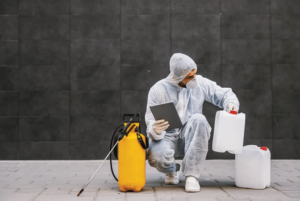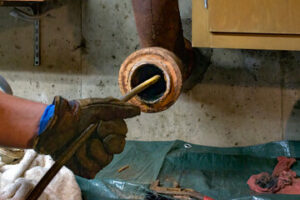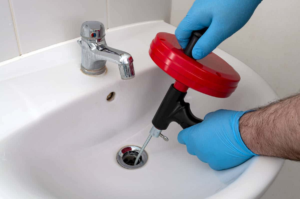Pests are organisms (fungi, insects, bacteria, viruses, nematodes, weeds and vertebrate animals) that negatively impact human activities or damage living areas. They also alter the environment by displacing desirable species, and by changing soil health and nutrient availability.
Look for a company that offers natural options and can discuss preventive steps you can take. Avoid a pest problem by eliminating clutter and sealing potential entry points into the home. For professional help, contact Pest Control Nampa.

Pests are organisms that interfere with human activities by damaging or destroying plants and animals, contaminating food or water, causing disease in humans or pets, or simply annoying people. Despite this, not all organisms are inherently pests; they may only become pests if their presence affects our quality of life. While some organisms are more likely to be considered pests than others, most organisms can be managed without the use of chemical controls. Prevention strategies include removing attractants and eliminating the conditions that encourage pests to develop. Identifying pests and their needs can also help prevent them from becoming a nuisance. For example, ants can be managed by removing the crumbs they leave behind and keeping garbage containers tightly closed. Rodents can be prevented from entering buildings by repairing cracks and gaps in walls and foundations, and cleaning up their droppings.
Integrated Pest Management (IPM) is an ecosystem-based strategy that uses common-sense practices to reduce pests without the use of harsh chemicals. It starts with a careful examination of the habitat and history of the pests. This information helps determine the kind of control that is needed, such as altering cultural practices, environmental manipulation or the usage of resistant plant varieties. The next step is to monitor the pests through a series of steps. Once a threshold level is reached, the proper control method will be implemented.
Threshold-based decision-making relates to observing the number of pests, their activity levels and other factors such as their reproductive status. For example, a few wasps scavenging in the garden may not warrant an intervention; however, when the numbers increase and the nest becomes exposed, a wasp-specific insecticide will be used to kill them. It is also important to understand pests’ lifespans and life cycles because some control methods are effective at certain stages of their development.
Pests can enter a facility through open windows, air vents or sewers; they may be carried in by staff or arrive on merchandise and equipment. They cause damage by consuming or damaging artifacts, introducing disease causing pathogens such as intestinal worms and microbial pathogens; contaminating food with their droppings; and deteriorating building materials, resulting in dampness and fungal decay. Good site sanitation, proper building maintenance and quarantine of artifacts can significantly reduce pest threats to museums.
Suppression
Often, when pest populations reach damaging levels, it is necessary to take action to reduce the population. Suppression strategies aim to bring the pest numbers down to a level that is acceptable for the environment and human occupation. Suppression is a common component of integrated pest management (IPM), which utilizes prevention and suppression strategies to reduce the number of pests in an area.
There are many ways to suppress pests and keep them at bay, from modifying the environment to capturing and killing them. The most important factor is to know exactly what kind of pest you are dealing with so you can tailor your control methods to that particular situation.
Some of the most common suppression techniques include modifying the environment, introducing natural enemies, and releasing biological controls. These are usually products made by people that are designed to kill the pests, such as nematodes that eat away at harmful soil grubs or parasitic wasps that attack greenhouse whitefly. Other products, such as nematicides, are sprayed onto the soil surface to provide a knock-down effect and prevent nematodes from moving up into plants.
Cultural controls involve modifying the conditions that allow the pests to grow, such as plowing, crop rotation and removal of infected plant material. These are a part of IPM and are used to reduce the need for chemical pesticides.
Another common method of suppression is the use of natural enemies to kill the pests or stop their reproduction. These can be predators such as birds and bats, parasites such as nematodes and wasps, or diseases such as fungi and viruses. These are used to supplement a variety of other control methods, including plant hormones, which inhibit the development of insects into adult forms, or chemicals that interfere with the growth cycle.
Many of the organisms that are considered pests in a certain area originally came from elsewhere and were brought there by humans either on purpose or accidentally. When they are introduced, they often don’t have their natural enemies back at home, so they can rapidly explode in population and take over habitats formerly occupied by native species. This method, called classic biological control, involves sending expeditions to the organisms’ places of origin to find and return their natural enemies.
Eradication
We can’t always live without pests, but sometimes they can be a nuisance and damage crops or pose health risks. Eradication strategies can range from prevention, which keeps a pest from becoming a problem; suppression, which reduces the population to an acceptable level; or even extermination, which destroys all pests. It’s important to consider how much the pests are costing you and what their long-term impacts are when making decisions about eradication.
Integrated Pest Management (IPM) is an ecosystem-based approach that involves monitoring to identify pests, their numbers and the degree of damage they are causing. Then, it takes into account the pest’s biology, environment and behavior when deciding on the best control options. Monitoring may include trapping, scouting and examining field conditions. A technique called degree day models can predict when a pest is likely to emerge and be damaging.
IPM methods are often cheaper and less harmful to people, plants or the environment than chemical control. They include cultural controls, such as adjusting irrigation practices to reduce disease and weed problems; physical controls, including traps for rodents and mulches for weed management; and biological controls, such as introducing predators or parasites to keep pest populations under control.
Chemical pesticides, which are sprayed directly on infested areas, usually offer more immediate results than other types of pest control but are more costly and can be toxic to humans and pets. Examples of chemicals used in pest control include repellents that deter pests, fungicides to prevent diseases and insecticides that kill insects.
Organic insecticides can be more environmentally friendly, but they take longer to work and may not be as effective against some pests. In addition, some pests develop resistance to organic insecticides over time, so they must be reapplied more frequently.
Eradication efforts typically involve large-scale operations at local, regional or national levels and are based on projects that measure the value of the benefits of removing the pests. This includes projecting future infections and vaccination costs, attaching values to these and discounting them, then comparing this discounted value to the cost of eradication to determine whether it is worth the expense.
Regulatory
Regulatory strategies are employed when pests can’t be managed effectively through preventive and suppression tactics. These include quarantine and eradication programs. The former prevents pests from entering areas where they don’t exist while the latter eradicates existing populations. Both of these strategies are deployed under the direction of governmental agencies in accordance with local and federal laws.
Regardless of the type of pest problem, it is important to first thoroughly evaluate the situation and environmental conditions that led to the infestation. This will help managers select effective control methods. In addition, it will allow the proper use of pesticides and ensure that pesticide residue levels in food and feed do not exceed the maximum permitted level.
Government facilities are particularly susceptible to pest infestations. These include schools, universities, and courthouses. They often house large amounts of food and have a variety of entry points. Rodents and insects look for food, water, shelter, and warmth in these buildings. Therefore, it is essential to prevent pests from infesting them and to keep them away from sensitive areas like operating rooms and sterile environments in health care facilities.
A wide range of pest control tactics can be employed in a government facility, from physical barriers to bait stations. In addition, integrated pest management (IPM) is often used in government facilities as a method of decreasing the amount of chemicals required to control pests. IPM focuses on making changes to the environment to reduce the likelihood of pests, such as adjusting irrigation practices and installing barriers.
The use of natural enemies to control pests, such as parasites and predators, is a common strategy in IPM. This technique is especially useful for reducing the use of pesticides in sensitive environments, such as in greenhouses and orchards. However, it is important to understand that natural enemies may be negatively affected by certain pesticides. Therefore, it is essential to choose pesticides with low toxicity and a short residual duration to minimize the impact on natural enemies.
It is also important to regularly communicate with your pest control company about the pest problems you have in your building and what steps they are taking to address them. This will help them develop an effective plan to prevent pests from infesting your building and ensure that they remain pest-free.


